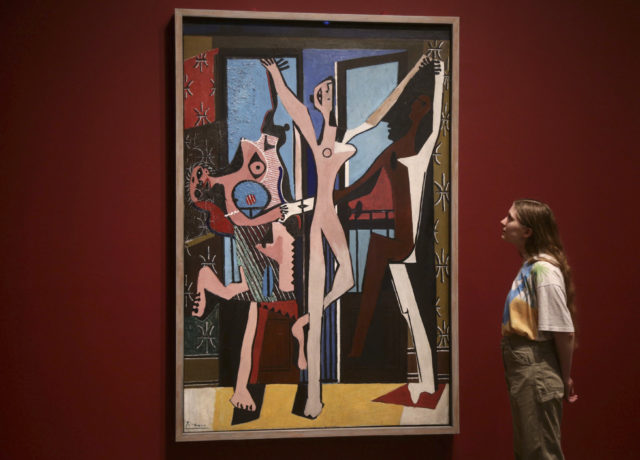By Samantha Amaro | Reporter
It’s a general theory for those on the outskirts of the art world looking in — artists harness their pain and suffering in life in order to create beauty. This raises the question — does misfortune translate into an artist’s work? Is suffering necessary for the artistic genius? This is not the first time these questions have been proposed, as they are often disputed and debated in the art world.
Vincent van Gogh, Pablo Picasso, Caravaggio — each of these names echo in history, and each of them have undergone some painful experiences that seem to translate into their work. Their lives were fraught with pain and other emotions, but determining whether it was their pain that influenced and gave their art a certain “je ne sais quoi” seems to be a hot topic of discussion in the art world.
Winter Rusiloski, professor of painting in Baylor’s art department, said she does not agree with the implication that pain is necessary for inspiration or artistic genius; the life of an artist does not need to be a tortured one for them to find success.
“I think artists, like all other professions, succeed from research, discipline and hard work regardless of their circumstances,” Rusiloski said.
Van Gogh, an artist well-known for his suffering, is frequently referenced as proof of the ‘tortured artist’ concept, and that pain is indeed necessary for success and synonymous with genius. In truth, Van Gogh is a single example of an artist who created masterful paintings and simultaneously led a painful life. His life was one that mostly revolved around art, and he arguably succeeded both because of the way his suffering influenced his work and because of his passion and dedication. His paintings, in fact, were only revered post mortem, as he was mostly perceived to be crazy and unconventional during his life.
Picasso is another notable figure that links high-selling paintings and pain. Picasso’s painting “La Gommeuse” sold for over $67 million, which broke a record during that time. However, it was not Picasso’s most expensive painting sold at an auction. His “Nude, Green Leaves and Bust” was purchased for over $106 million in 2010.
Aine Ni Laoghaire, an Irish actor and performer based in Dublin, wrote for the Irish Times about how inspiration comes in waves. Laoghaire wrote the popular idea of a tortured artist was nothing more than a myth, describing it as “a concept we’ve invented to turn people who create into demigods.”
Laoghaire writes that the idea that those who have not succeeded in becoming such “demigods” are restricted from art is untrue. “As a result, the idea of one of us lowly ones [those who have not succeeded in becoming such lauded artists and demigods] making art, or even attempting to, seems absurd.”
Christopher Zara, journalist and author of the book Tortured Artists, presents an argument on the other side of the spectrum. His view, which is reflected in his book, describes a direct connection between experiencing personal tribulations and creating masterpieces.
“Van Gogh may have suffered from anxiety, absinthe addiction, and debilitating seizures,” Zara writes, “but his suffering gave him insight, and that insight, in turn, gave the world a new kind of art called Post-Impressionism.”
In his article from the Huffington Post, Zara writes that, without suffering, the art will likely not be as great.
Tirunelveli, India, sophomore Kirupa Sargunaraja, a studio art major, said she thinks the concept of the ‘tortured artist’ is not true. Life experiences are necessary for expressing various concepts, but having a painful life does not guarantee that the work is easier to complete, or better in the long run.
“It’s wrong to think that it makes an artist’s work stronger or more interesting,” Sargunaraja said.



